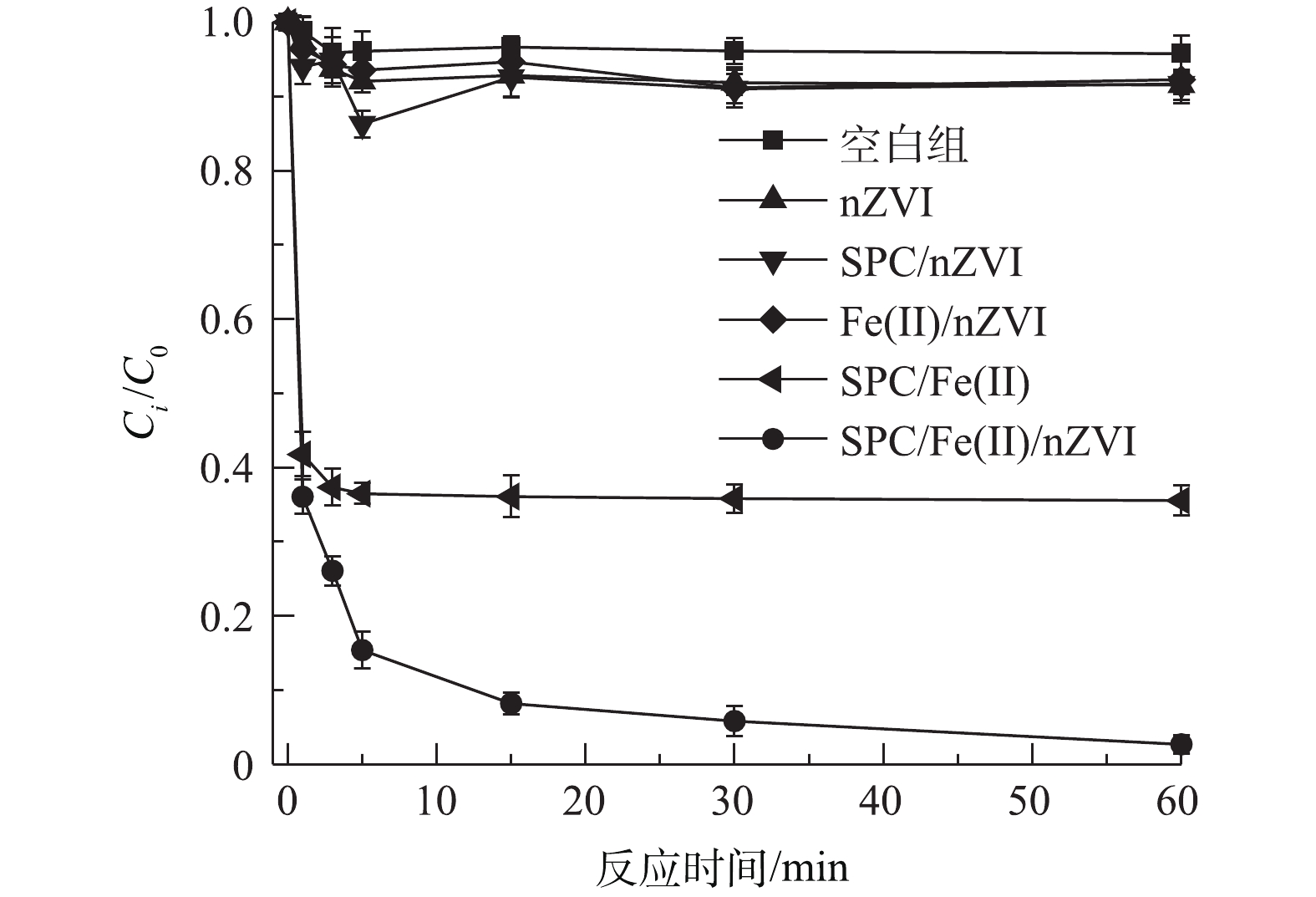-
长光程差分吸收光谱技术(long-path differential optical absorption spectroscopy system, LP-DOAS)[1]早期主要应用于对流层和平流层中大气痕量组分的测量,解决卤素氧化物等大气层臭氧收支问题[2-6]。近年来,许多学者[7-12]对紫外-可见波段差分吸收光谱系统(ultraviolet-visible differential optical absorption spectrometry, UV-DOAS)连续监测大气中单环芳香烃(苯、甲苯等)、Hg、HCl、NH3、NO2、SO2和O3等污染物进行了研究,结果表明,该方法能满足大气环境中多种痕量气体的监测需求。
针对重点区域强化监督以及全面执行大气污染物特别排放限值的要求[13],本研究对位于上海市南端、东海之滨杭州湾北岸的上海化学工业区开展了常规污染物及挥发性有机物的长期自动监测及分析的工作。在上海化学工业区西北监测站点搭建长光程紫外-可见波段差分吸收光谱系统(ultraviolet-visible differential optical absorption spectrometry, UV-DOAS),长期自动监测化工区污染物排放情况。选取同站点的点位测量装置(气相色谱氢火焰离子检测器,gas chromatography-flame ionization detector, GC-FID)[14]的测量数据与UV-DOAS系统测量数据进行比对,验证系统测量的有效性和稳定性。结合该监测站点的气象数据,本研究对测量数据进行日均浓度分析以及月均浓度分析,判断温度、湿度和季节的变化以及化学工业区污染物排放对监测数据的影响。本研究采用基于拉格朗日传输、扩散模式的HYSPLIT_4模式[15]来模拟分析上海市化学工业区大气中污染物的扩散情况,分析化学工业区污染物的排放对上海城区的影响,以期为上海市大气环境污染物监测及治理提供参考。
全文HTML
-
差分吸收光谱法(differential optical absorption spectroscopy system, DOAS)是利用被测物质在不同波段上的窄带特征吸收谱线来反演被测物质浓度的方法。DOAS的理论基础是修正后的Beer-Lambert定律[16],当光束通过被测大气时,经散射、吸收后被探测器接收,此时的光强计算方法见式(1)。
式中:
I(λ) 为探测器接收的光强;I0(λ) 为发射光强;σi(λ,P,T) 为待测气体i在压强P、温度T下的吸收截面;Ci 为气体i的浓度;L为光程长度;εR(λ) 、εM(λ) 分别为米散射系数和瑞利散射系数。差分吸收截面可以分为随波长缓慢变化的部分σi0(λ,P,T) 和随波长快速变化的部分σ′i(λ,P,T) 。将式(1)通过数字滤波去除随波长缓慢变化的部分,得到随波长快速变化的部分,此时的差分光学密度计算方法见式(2)。最后,将差分吸收光学密度和待测气体的参考吸收截面作最小二乘拟合,从而反演出各组分气体的浓度。 -
UV-DOAS测量系统位于上海化学工业区西北监测站。该站点搭建了多种环境监测仪器,如气相色谱氢火焰离子检测器(GC-FID),可利用不同仪器对同种物质的浓度进行测量比对。UV-DOAS系统的测量光程约100 m,距离地面高度约10 m。一旦监测到污染物浓度超标,仪器将自动报警,可起到边界围栏的作用。
该测量系统由发射器光源、接收器、光纤以及光学分析仪组成(图1)。其中,光学分析仪的组成包括分光计、检测器、控制电子线路系统,以及用于信号处理和数据分析的计算机。该测量系统由瑞典OPSIS公司研发,发射器采用高压氙灯作为光源。氙灯发射出的平稳光谱所覆盖波长范围从紫外200 nm到红外2 000 nm左右。
对紫外波段包含气体特征吸收的光谱进行测量,过程如下:光束由发射端射向接收端,经光路上分子和颗粒物的散射和吸收形成衰减;接收端获取的光通过一根光纤导入分析仪,避免将光学分析仪置于含尘、高湿度、大温差的环境中;通过光纤引入到分析仪的光首先进入分光计,在分光计内,光栅会使某一特定波段的光发生折射;折射光投射到具有高速扫描功能的狭缝上,通常,在狭缝后方布置有光电倍增检测器或红外感光二极管,从而将光谱记录下来;通过转动光栅,可以检测光谱上任意选定的部分,起到波长选择窗口的作用;最后,通过分析记录下来的光谱计算出测量光路上各种污染物的浓度。
UV-DOAS系统给出的数据包括污染物浓度、浓度偏差及归一化相对光强。在获得数据后,判断测量数据是否有效。图2(a)和图2(b)分别给出测量数据中甲苯测量浓度和归一化相对光强的关系以及测量浓度与浓度偏差的关系。如图2(a)所示,随着甲苯浓度的升高,归一化相对光强随之下降,并且浓度偏差低于测量浓度的20%(见图2(b))。当满足以上条件时,判断数据有效。在对甲苯浓度的测量过程中,UV-DOAS系统的时间分辨率为24 min,GC-FID系统的时间分辨率为60 min。为更好地对2个系统测得的甲苯浓度进行对比,对UV-DOAS系统测得的甲苯浓度值进行小时浓度平均。图2(b)显示了2018年4月1日0时至4月30日23时UV-DOAS系统测得甲苯浓度的小时平均值以及测得甲苯浓度小时平均值的误差范围,浓度偏差均低于测得浓度的20%。
-
UV-DOAS测量系统位于上海市南端、东海之滨杭州湾北岸的上海化学工业区的西北边界监测站点。化学工业园区横跨金山和奉贤两区,规划面积29.4 km2,管理面积36.1 km2。园区企业以从事石油和天然气化工工业的企业为主,发展合成新材料、精细化工等石油深加工产品,主要产品包括乙烯、异氰酸酯和聚碳酸酯等。整个化学工业区在生产过程中会排放大量工业废气,因此,对其开展常规污染物和挥发性有机物的长期自动监测及分析是十分必要的。西北边界监测站位于化学工业区西北方向的边界上,UV-DOAS光程铺设及GC-FID安置位置如图3所示。
1.1. 测量原理
1.2. 测量系统
1.3. 测量系统铺设信息
-
通过将UV-DOAS系统和GC-FID系统测得的甲苯浓度进行对比,来验证UV-DOAS系统测量的有效性。2套系统位于相同的监测站。选取2018年4月1日至2018年4月30日总计30 d的甲苯浓度数据进行对比。UV-DOAS系统测量的甲苯浓度值为空间路径上的平均值,GC-FID测量的甲苯浓度值为点位抽取空气的浓度值,故GC-FID测量的甲苯浓度值更容易受到站点周边化工区排放污染源的影响。由图4(a)可知,2台仪器观测期间的平均日变化趋势对比情况,黑色方块显示了UV-DOAS测量的甲苯平均日变化,黑色三角形显示对应的测量时间内GC-FID测量的甲苯平均日变化。2种方法测量的大气甲苯的平均日变化趋势相似,且甲苯的平均日变化浓度在2~10 μg·m−3范围内波动。UV-DOAS系统测量的平均日变化浓度值缺少峰值,可能是由于UV-DOAS系统的测量光路远离化工区排放的污染源,测量到的浓度值是化工园区排放的污染源扩散到该位置的结果。对2台仪器的平均日变化浓度值进行线性拟合,结果见图4(b),得到的拟合系数R2为0.87,验证了UV-DOAS测量系统的有效性。
-
选取上海化学工业区西北监测站点气象数据,结合UV-DOAS系统测量的氯化氢(HCl)浓度数据进行分析。从2017年7月15日0点开始到2019年7月14日23点结束,2年间在化工区西北站监测到的风向频率玫瑰图如图5(a)所示,HCl浓度与风向的关系见图5(b),日浓度变化特征见图5(c)。如图5(a)所示,监测期间东风天气占比13.8%,占比最高。风向以东北风偏东、南南东风为主导。除西西北、西北、北北西风以外,其他各方向的风频总和高达92.7%。由此判断,西北监测站点监测到的数据主要基于化学工业区的排放。
污染物浓度-风向分析结果(见图5(b))显示:受北风和静风影响时,HCl的浓度显著高于其他风向;受西风、西西北风、西北风和北北西风影响时,浓度显著低于其他风向。结合图5(a)分析可判断,监测到的HCl浓度值主要受园区方向及站点周围污染源的综合影响。
在图5(c)中,黑色圆点显示了HCl日浓度平均值的变化趋势,可以看出,HCl的浓度变化趋势比较平缓。从凌晨3时开始浓度缓慢上升,在早上8时达到浓度峰值后浓度开始缓慢下降,下午17时浓度再次上升。HCl浓度变化整体表现为夜间污染物浓度高于白天。气态HCl在标准状态下吸收截面主要位于200 nm以下深紫外波段[17],而太阳辐射经大气层到达地表的主要波长位于290 nm以上,接近紫外及可见波段[18],因此,HCl的浓度变化与太阳光强度无关,主要是受化工园区污染物排放的影响。图5(c)中显示了日均浓度波动范围内的第1个四分位值和第3个四分位值的变化趋势,可以发现,其趋势和日浓度平均值的变化趋势是一致的。
本研究对整个监测期间的HCl浓度数据进行月度平均分析,结果如图6(a)所示。可以看出,HCl的月度平均浓度值(黑色圆点)的变化情况:冬季时为谷值;春季时浓度值上升,在夏季达到峰值;秋季浓度值下降,在冬季降至谷值。因为气态HCl在标准状态下光解主要位于200 nm以下深紫外波段,所以可忽略光解影响。HCl在对流层大气中的主要去向是与·OH反应及沉降,而大气中的·OH主要来自于臭氧和亚硝酸的紫外光解,并且夏季·OH的浓度高于冬季[17, 19-20]。因此,UV-DOAS系统测量结果显示上海市化学工业区内HCl的夏季平均浓度明显高于冬季。结合化工区的气象数据(图6),可以看出夏季的水蒸气绝对浓度高于冬季,夏季时大气中的HCl更多地溶解于水,但夏季气温升高,HCl的蒸发量上升。而冬季时气温较低,边界层高度低,污染源排放所产生的HCl将比夏季具有更快的冷凝沉降速率,其气态保持寿命很短。因此,监测到的气态HCl主要受温度和大气中水蒸气绝对浓度的影响,导致HCl月度平均浓度值的变化呈现冬季为谷值、夏季达到峰值的现象。
-
污染物浓度在空间中的变化和排放源位置以及气相场的变化有关,空气中的污染物会随着气团的流动而流动,所以可以通过气流轨迹聚类分析了解污染物的来源以及扩散情况。本研究采用HYSPLIT_4模式来模拟分析化学工业区大气中污染物的扩散情况[15, 21-22]。
实验接收系统搭建在上海市金山区化学工业区西北边界站站点的3楼楼顶。实验光路与化工园区西北边界重合,起到边界围栏的作用。实验光源距离地面约为10 m,固定在100 m外的支撑杆上。选择光源与接收器两点之间的点(五角星)为模拟分析的起始点,起始高度为10 m。由图6可知,每年的夏季,HCl的浓度会达到峰值,故分别对2017年、2018年和2019年的6月份做前向轨迹聚类分析,从6月1日0点开始到30日23点结束,每隔1 h向前追迹24 h得到720条轨迹。对720条追迹轨迹进行分型聚类分析,可以知道污染物的扩散问题。图7为其前向轨迹聚类分析图。以图7中黑色五角星(30.788N,121.425E)为起始点,每隔1 h向前追迹24 h。图7中每条分型线上的点之间间隔6 h。由图7(a)可知,在2017年6月,约92%的污染物在扩散时经过上海城区,对城区造成污染影响,约12%污染物向海洋方向扩散。由图7(b)可知,在2018年6月,约96%的污染物在扩散时经过上海城区,约13%污染物向海洋方向扩散。由图7(c)可知,在2019年6月,约94%的污染物在扩散时经过上海城区,约9%的污染物向海洋方向扩散。结合连续3年的轨迹聚类分析可知,每年6月份,约95%的污染物在扩散时经过上海城区,对上海地区造成污染,约10%污染物向海洋方向扩散。
选择2017年6月西北边界站UV-DOAS测量的HCl浓度数据和上海市环境科学研究院气体与气溶胶分析仪(Monitoring Instrument for Aerosols and Gases,Marga)测量的HCl浓度数据进行对比分析,结果如图8所示。上海市环境科学研究院在西北边界站的正北方向,结合2017年6月的前向轨迹聚类分析结果(图7(a)),可以看出,约7%的污染物在扩散时会经过上海市环境科学研究院。将2个站点的浓度数据做平均日变化分析,并对平均日变化浓度值进行线性拟合,得到拟合系数R2为0.46,证明2个站点测量的HCl浓度数据具有一定的相关性。夏季时,化学工业区排放的污染物会向上海城区方向扩散并对上海城区造成污染影响。
对2017年的4个季节分别做前向轨迹聚类分析,以黑色五角星(30.788N,121.425E)为起始点,每隔1 h向前追迹24 h。图9为其前向轨迹聚类分析图。如图9(a)所示,2017年春季,有60%左右的污染物在扩散时经过上海城区,17%的污染物向海洋方向扩散; 2017年夏季,有80%以上的污染物扩散时经过上海城区,16%的污染物向海洋方向扩散(见图9(b));2017年秋季,仅有39%的污染物扩散时经过上海城区,有17%的污染物向海洋方向扩散(见图9(c));2017年冬季,有59%的污染物扩散时经过上海城区,有13%的污染物向海洋方向扩散(见图9(d))。结合2017年4个季节的轨迹聚类分析结果,可以看出:2017年夏季时化工区排放的污染物对上海城区的污染影响最大;秋季时对上海城区的污染影响最小。
2.1. UV-DOAS与GC-FID比对分析
2.2. HCl长期监测日均及月度平均分析
2.3. 前向追迹分析
-
1)对比UV-DOAS和GC-FID 2套系统测量的大气甲苯浓度值发现,2种测量值的日平均变化相似,拟合系数R2为0.87。对UV-DOAS系统测量数据进行有效性验证,结果表明,该系统可满足在线监测大气污染物的要求。
2)结合2017—2019年化学工业区西北监测站点的风向风速数据,对UV-DOAS系统测量的HCl数据进行日均浓度值分析,发现HCl的日均浓度值变化趋势比较平缓,主要受化工园区污染物排放的影响。结合站点测得的温度和湿度数据,发现HCl浓度变化主要受到化工区污染物排放的影响。HCl的月度平均浓度值变化趋势为:冬季谷值,春季上升,在夏季达到峰值,秋季下降后,最终在冬季又降至谷值。
3)2017—2019年监测数据的轨迹聚类分析结果表明:每年6月份污染物扩散时,约95%会经过上海城区,对上海市区造成污染影响;约10%的污染物向海洋方向扩散。2017年4个季节监测数据的轨迹聚类分析结果表明:夏季时,化工区排放的污染物对上海城区的污染影响最大;秋季时,化工区排放的污染物对上海城区的污染影响最小。






 下载:
下载:



















